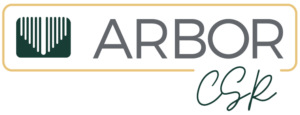Sponsors today are increasingly choosing bridge lending solutions to capitalize on opportunities during the lease-up and stabilization phases, with multifamily completions projected to remain elevated through 2030. Bridge loans, when paired with a lender equipped to support your investment needs from construction through permanent financing, can effectively position borrowers for long-term success.
At Arbor, we are committed to responsible and ethical business practices. That is why we follow the ISS (Investor Stewardship Services) Environmental, Social, and Governance (ESG) standards. ISS is a leading provider of corporate governance and sustainability solutions. Their ESG standards are used by investors to assess and manage their ESG risks and opportunities.
By following the standards, we are demonstrating our commitment to:
- Environmental stewardship: We are working to reduce our environmental impact and support sustainable practices.
- Social responsibility: We are committed to creating a positive social impact, including through our employee relations, diversity and inclusion initiatives, and community support.
- Good governance: We are committed to sound corporate governance practices, including transparency, accountability, and ethical behavior.
We believe that following the ISS ESG standards is good for our business, our customers, and our community. It allows us to attract and retain top talent, build strong relationships with our customers, and operate in a sustainable and responsible manner.
We encourage our customers to learn more about the ISS ESG standards and how they are impacting the financial industry. You can find more information on the ISS website: https://www.issgovernance.com/esg/

Responsible Parties
Arbor’s executive management team is responsible for promoting our Corporate Responsibility Principles and for ensuring corporate strategies are developed and implemented in a manner consistent with corporate responsibility and climate goals, objectives, and initiatives.
- Our lending function and the management responsible for those functions will oversee the integration of Corporate Responsibility Principles into the loan origination processes and will be responsible for ensuring responsible investment practices across all lending platforms and product offerings.
- Our dedicated Corporate Responsibility Taskforce will work cross-functionally with relevant internal and external stakeholders to ensure alignment with the Corporate Responsibility Policy.
- The Corporate Governance Committee of the Board of Directors, the General Counsel, and the Office of the Corporate Secretary provide oversight over corporate responsibility- and climate-related policy creation and relevant disclosures.
- Arbor’s Board of Directors will from time to time consider corporate responsibility and climate-related topics for discussion and appropriate prioritization.
- The Finance and Legal teams will engage from time to time with outside legal and other advisors to remain current of all corporate responsibility applicable rules, regulations and reporting obligations.
Reporting
Arbor is committed to transparency and accountability in our corporate responsibility program and as such, publishes an annual Corporate Responsibility and Impact Report. In addition, we have a number of responsible governance policies in place including:
Risk Mitigation
Arbor is committed to continuous improvement of our risk management framework. We regularly review and update our framework to ensure that it reflects the latest best practices and that it is tailored to our specific risks. Our framework includes:
- A clear and well-defined risk management policy that sets our approach to identifying, assessing, managing, and monitoring risks.
- A strong risk management culture focused on risk awareness and accountability throughout our organization.
- A robust risk management process that includes regular risk assessments, the development of mitigation strategies, and ongoing monitoring of risks.
We believe that our strong commitment to risk mitigation is a key differentiator for our company. It allows us to provide our customers with confidence that their mortgages are safe and secure.

Climate Risk
Arbor continues to assess our current processes for measuring, disclosing, and reporting sustainability and climate metrics. In preparation for compliance with state GHG emissions reporting regulations such as legislation in California, Illinois, New York, Minnesota, and Washington, Arbor conducted a Scope 1 and 2 GHG Inventory in 2024 and expanded to Scope 3 in 2025. Furthermore, we continue to evaluate potential climate-related risks and opportunities and maintain the firm’s ability to stay resilient and profitable in the future.
As climate risks are increasingly being viewed through a financial lens, Arbor’s risk management team is actively exploring how physical climate events could impact loan servicing, repayment risk, and collateral valuation. These assessments help Arbor understand where climate considerations should be embedded in underwriting criteria, property-level due diligence, and post-loan monitoring processes. The company has retained a sustainability consulting partner to help Arbor start evaluating our exposure to these risks and model future climate-related scenarios aligned with global warming pathways. This includes developing a more granular understanding of long-term physical and transitional risk exposure.
Full information can be found in our TCFD Report

